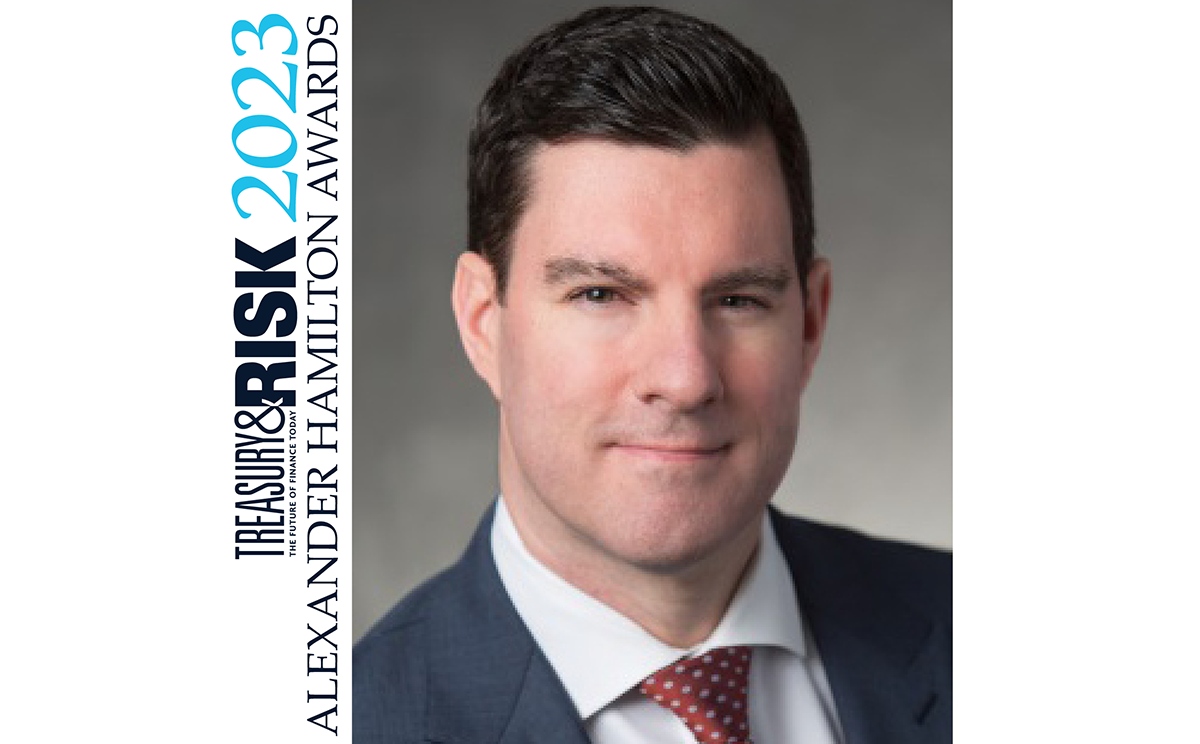 As we reported last month, a recent PwC survey found that even as companies stockpile cash, few treasurers are shifting portions of their portfolio into riskier investments to increase the yield they're earning.
As we reported last month, a recent PwC survey found that even as companies stockpile cash, few treasurers are shifting portions of their portfolio into riskier investments to increase the yield they're earning.
Three-quarters of the survey's respondents said their company's cash as a percentage of total assets either increased or remained the same over the past year, whereas fewer than one-quarter (22 percent) said that ratio has decreased. As they decide where to park this cash, survey respondents' primary goals are preserving principal and maintaining liquidity. Maximizing returns placed a far-distant third.
One reason PwC conducted the survey in the first place is that many clients were expressing interest in shifting investment strategies in order to increase returns on their excess cash, but the survey found that few are actually making this move. Another key finding was that most companies lack the processes and systems they would need to effectively manage the risks and performance of their portfolio if they did begin to pursue higher yield on some portion of their cash. Treasury & Risk sat down with PwC principal Peter Frank to identify the gaps and discuss what companies can do about them.
T&R: What do you see as the key take-aways of the PwC Cash Investment Survey?
Peter Frank: Excess-cash investment management is one of the most basic things that a corporate treasurer does, and it tends not to be a tremendously dynamic activity. Yet over the past six to 12 months, we've been getting a lot of questions from our clients about investing excess cash. I think the questions have been driven by a few things in the marketplace: First, of course, companies continue to have improving cash flow performance, so their cash balances are increasing. Second, there is an issue with companies accumulating significant portions of those cash balances in jurisdictions outside the United States. And the third driver is the continued low-interest-rate environment.
Companies' investment objectives continue to be focused on preservation of principal and maintenance of adequate liquidity, yet at the same time there is growing impatience for having investment portfolio yields that may be zero percent or a few basis points. In the better cases, they're probably dozens of basis points rather than several percentage points. So many of our clients have indicated that they're reconsidering their investment strategies and considering how they can become more aggressive in how they're investing for the purpose of capturing incremental yield.
With that in mind, I think the key take-away from the survey is that there hasn't actually been a lot of action in terms of companies changing their investment strategy. Companies have a few options for taking more risk to get increased yield. They could expand the types of investment instruments they use. They could step down the credit quality of allowable investments. Or they could extend out on the investment horizon to enter into longer-dated-maturity instruments. But the survey results suggest that despite the talk, although everyone is interested in doing something differently, there hasn't been much change in what companies are actually doing.
T&R: Is this a matter of investment policies not allowing companies the flexibility to take on a bit more risk in pursuit of yield?
PF: The survey suggests that policies actually already accommodate some reasonable flexibility in terms of more aggressive investment strategies. I think it relates more to the processes, tools, and infrastructure that companies are using. As consultants, we help a lot of companies with putting in place policies, processes, and systems to better manage all aspects of treasury, including excess-cash investment portfolios. But we were even a little surprised by the relatively small number of companies that formally measure the performance of their portfolio or do any sort of risk analysis around their portfolio. [Only 51 percent of respondents to the PwC survey said they regularly benchmark the performance of their investment portfolio against an external benchmark.]
 One other issue is the continued pervasiveness of Microsoft Excel spreadsheets; Excel is still the primary tool companies are using to manage their portfolios. We went into this survey with the hypothesis that there might be opportunities for companies to take a bit more risk in their portfolios. But to do that from a control standpoint, you really have to have the ability to accurately track and measure risk, and measure performance, in the portfolio. Based on the survey results, it looks to us like even though companies may like the idea of taking on more risk to get more return, they by and large don't have the tools, the processes, the infrastructure that would allow them to do that in a manner consistent with sound risk management.
One other issue is the continued pervasiveness of Microsoft Excel spreadsheets; Excel is still the primary tool companies are using to manage their portfolios. We went into this survey with the hypothesis that there might be opportunities for companies to take a bit more risk in their portfolios. But to do that from a control standpoint, you really have to have the ability to accurately track and measure risk, and measure performance, in the portfolio. Based on the survey results, it looks to us like even though companies may like the idea of taking on more risk to get more return, they by and large don't have the tools, the processes, the infrastructure that would allow them to do that in a manner consistent with sound risk management.
T&R: So, what are best practices in managing the risk and performance of a corporate excess-cash investment portfolio?
PF: Well, some companies that are measuring performance are just looking at the return on their assets. Instead, at a minimum you would want to establish a benchmark. You would want to say, 'Here's our investment strategy; here's our asset allocation. For this type of strategy and allocation, we would expect to get certain returns based on different benchmarks that exist.' Looking at returns versus expected returns based on a benchmark, even on a notional basis, would be the first step.
The second step would be to introduce some concept of risk measurement into the portfolio—so doing things like defining alternative portfolios based on different strategies, looking at the risk and return profiles of those different strategies. You could use a risk technique like a sensitivity analysis, it could be a scenario analysis, or you could use more advanced tools like Value at Risk (VaR).
But you want to analyze and model the potential risk within a portfolio so you can make a decision like: 'Our current portfolio is yielding 20 basis points. If we made the following strategy changes, we could earn 1 percent instead. But we could have a variation around that 1 percent, where in a 95 percent case scenario we might earn only 40 basis points, or in some cases we might lose money on the portfolio.'
It's a good idea to establish benchmarks, develop alternative strategies, and then look at the risk/return characteristics of those alternative strategies. With that information, a management team can come to a conclusion about what level of risk is acceptable.
T&R: Obviously, many companies have a low risk tolerance for their cash portfolio. What alternatives should they be looking at?
PF: One thing companies could do is invest part of their portfolio overnight in very short-term instruments. I'm making this number up, but maybe that's 80 percent of the company's total cash investments. Or it might put a similarly large percentage in money market funds or bank deposits. But the company might want to take a sliver of the portfolio somewhere else. It might be willing to put 5 percent in corporate bonds, or put 10 percent in longer-dated Treasury securities. Management might say, 'We understand there's some potential risk associated with doing that, but we understand that risk, we've put some bounds around it, and we're comfortable that if adverse scenarios happen, we can deal with it. We're willing to take the risk to get some incremental return.'
 Our sense is that a lot of companies are basically saying, 'We're not willing to take any risk,' whereas there might be an opportunity to take some risks in an informed way—in a smart way that's visible and transparent to everyone in the organization—to get some extra return.
Our sense is that a lot of companies are basically saying, 'We're not willing to take any risk,' whereas there might be an opportunity to take some risks in an informed way—in a smart way that's visible and transparent to everyone in the organization—to get some extra return.
Just to be clear, we're not advocating that companies necessarily go out and do this. What we're saying is that they might want to invest some time in thinking about it and applying some analytical techniques to evaluate in an objective way whether it might make sense. Companies may conclude it doesn't make sense, and that's perfectly fine. But it seems like right now there's hand-wringing about excess cash dragging company performance down, while there are steps companies could take to potentially address the situation.
T&R: If companies are willing to take different levels of risk on different segments of their portfolio, what should their performance management look like? Should they set up separate benchmarks for each segment?
PF: That's exactly right. We suggest that our clients consider segmenting their portfolio, having discrete investment objectives, investment strategies, asset allocations, and performance benchmarks for those different segments. You might have a segment where part of the portfolio is for very-short-term liquidity. It's meant to handle the day-to-day, week-to-week, month-to-month variations in cash inflows and outflows. You might have zero principal risk tolerance and require one-day or two-day liquidity for this whole portfolio segment. And you might manage it using a benchmark tied to a money market fund index or something related to the Federal funds rate.
But then you might have another tranche of investment balances that is more medium-term. This might be cash you're going to use for big capital expenses or for a deal of some sort, or that you might need to provide a buffer against a downturn in the business. Maybe you would decide that you need to be able to tap into this cash in no less than three months but no more than a year out. So you would want to have a separate investment strategy for that segment.
And then you might have another bucket that is truly excess cash. You might not have it earmarked for anything, and you might know you're probably not going to need it within the next year. So you'd have a different set of strategies around that.
The point is, it's a good idea to tie the segmentation of the portfolio to the potential uses of, and needs for, the cash. From there, you can set the Street objectives, strategies, asset allocations, and performance metrics for each segment.
T&R: And is that kind of portfolio management possible using spreadsheets?
PF: It's possible. The question is whether it's optimal. If you are a smallish company and you don't have tons of activity—if you invest overnight in bank deposits or money market funds and that's all you do—then spreadsheets may not be the best solution, but they're probably fine. If you're at the other end of the spectrum and have investment balances around the globe that you manage centrally or regionally, you have multiple portfolio segments, you are investing directly in individual securities of different types, and you have a high volume, then it is probably impossible to manage with spreadsheets. Well, maybe not impossible; if you throw enough bodies at anything, it can be done. But spreadsheets wouldn't be an optimal solution.
T&R: Do you anticipate that pressure is going to build for corporate treasurers to increase their level of sophistication in managing excess-cash investment portfolios?
PF: As you know, the new money market regulations are changing significantly the potential attractiveness of prime money market funds, which are currently the single most preferred instrument for most corporates to manage day-to-day liquidity. It's too early to say exactly how that will all shake out, but companies are going to have a lot to think about. I think there's going to be a lot more pressure to do a better job of cash forecasting, and I expect that we might see more companies doing more direct investing in money market instruments, rather than through funds. Both of these things will, in turn, place pressure on corporate treasurers to have better infrastructure and tools. The exact operational and strategic implications of the regulations are still to be determined, but my sense is that this will be a big deal.
See also:
© 2025 ALM Global, LLC, All Rights Reserved. Request academic re-use from www.copyright.com. All other uses, submit a request to [email protected]. For more information visit Asset & Logo Licensing.




